|
Introducing the Hogwash Farm CSA Blog! After five years, I thought is was time to retire the monthly newsletter – which was fun to put together, but was not very useful as a searchable collection of information and recipes. Switching to the more user-friendly CSA blog will making finding specific recipes or cooking techniques for our meats much easier. Farm happenings, photos, and recipes will still be included. I will start transferring some of the more useful articles from past newsletters into the blog, starting with the Grass Fed Primer (below) from 2011. January was busy around the farm with animals coming going, and moving. I was happy to wish a bon voyage to 30+ piglets that were born here in November that went to a farm in Concord, MA. Piglets are such fun to have around, but they grow fast – it was past time for this bunch to leave mom and move on! Lots of people have been asking how the animals manage with the windy, cold, and snow this winter. Below are some photos Dave took around the farm in January. The only animals put out by the winter weather are the laying hens. They are not fans of snow and are counting the day until spring – which according to Punxsutawney Phil will be at least 6 more weeks… The February share will include a maple sausage made with a new recipe from a different processor. I would love to hear everyone’s opinion – good or bad – about the new version. Also, in the share will be a pork shoulder. Pulled pork is one of the easiest and most delicious meals! Perfect for a winter weekend with the slow cooker doing all the work and served with your favorite barbecue sauce. Try this classic recipe from Chow Hound or go on the wild side with Korean Pulled Pork from Bobby Flay. Stay warm!! Nancy Below is an excerpt from “The Grassfed Primer” which is a publication produced by Animal Welfare Approved. You can find a PDF of the entire piece here.
The Grass Fed Primer Grass fed beef is not only lower in overall fat and in saturated fat, but it has the added advantage of providing more omega-3 fats. Studies from around the world have shown that meat from grass fed animals has two to four times more omega-3 fatty acids than meat from grain fed animals. Omega-3s are often called ”good fats“ because they play a vital role in every cell and organ system in the human body. It might surprise you to know that, of all the fats, they are also the most heart- friendly. Indeed, people who have ample amounts of omega-3s in their diet are less likely to have high blood pressure or an irregular heartbeat. These crucial healthy fats are most plentiful in flaxseeds and fish, and are also found in walnuts, soybeans and in meat from animals that have grazed on omega-3 rich grass. Interestingly, scientists have also found that even if cattle start their lives on grass they immediately begin losing the health benefits, such as the omega-3s stored in their tissues, when they are taken off grass and shipped to a feedlot for fattening on grain. As a consequence, the meat from feedlot animals typically contains 50–85 percent less omega-3s than meat from grass fed livestock. Conjugated linoleic acid (CLA) is another “good” fat worth examining. When ruminants are raised on fresh pasture alone, their meat and milk contains three to five times more CLA than similar products from animals fed grain-based diets. Scientists now believe that CLA may be one of our most potent defenses against cancer. In laboratory animals, a very small percentage of CLA — a mere 0.1 percent of total calories — greatly reduced tumor growth. Other studies have shown that a study group of hamsters fed a diet of CLA had lower amounts of LDL (low density lipoprotein) in the blood, as well as a reduced risk of developing early aortic athero-sclerosis. Another study from Iran found that adults with rheumatoid arthritis showed a significant decrease in blood pressure after CLA additions to their diet. Research has also shown that grass fed meat is higher in vitamin E than meat from grain fed animals and — surprisingly — higher than that of grain fed animals that were given high doses of synthetic vitamin E supplements. In humans, we know that natural vitamin E in the diet is linked with a lower risk of heart disease and cancer.
1 Comment
|
Archives
March 2017
Categories
All
Follow us on Facebook and Instagram!
|
Meat raised with integrity in the Root District of Norwich, Vermont
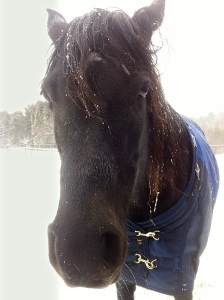
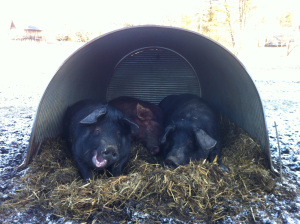
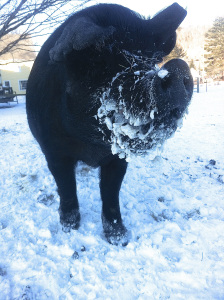
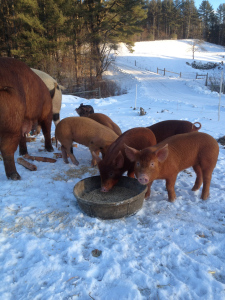
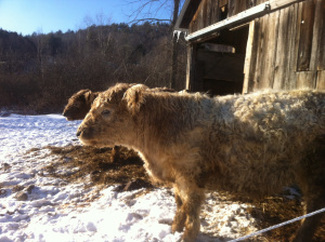
 RSS Feed
RSS Feed